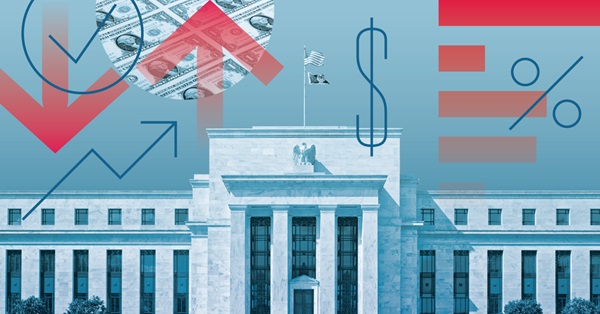

Whenever the issue of sustainable real estate construction comes up, some people quickly discard it because of the heavy financial cost involved. Good things don’t come cheap after all, they reason. But do you know that sustainable housing initiatives are proving cheaper, not just in the short run, but over a long time? There are various ways in which these properties can yield higher returns and lower operational costs.
There are substantial financial benefits to building eco-friendly homes and buildings, and that is what I want to talk about.
Long-term cost saving
Tekedia Mini-MBA edition 14 (June 3 – Sept 2, 2024) begins registrations; get massive discounts with early registration here.
Tekedia AI in Business Masterclass opens registrations here.
Join Tekedia Capital Syndicate and invest in Africa’s finest startups here.
Investing in sustainable real estate offers a range of financial benefits that extend beyond traditional property investments. One of the key advantages is the potential for long-term cost savings through reduced energy consumption and operational expenses. Sustainable buildings are designed to be energy-efficient, with features such as high-performance insulation, energy-efficient appliances, and renewable energy systems like solar panels. As a result, owners of sustainable properties can benefit from lower utility bills and reduced maintenance costs over the lifespan of the building.
Higher rental income
Due to the many benefits of living in eco-friendly homes, sustainable properties often command higher rental rates and property values due to their desirable features and environmental certifications. Tenants increasingly seek green buildings for lower operating costs, healthier indoor environments, and positive environmental impact. This higher demand translates into increased rental income and property appreciation for investors, resulting in higher overall returns on investment.
Lower Operational and Maintenance Costs
Energy efficiency is a central component of sustainable real estate investment, offering significant opportunities for cost savings and financial returns. By investing in energy-efficient building materials and technologies, property owners can reduce their energy consumption and operating expenses while minimizing their environmental footprint. For example, incorporating features such as LED lighting, efficient HVAC systems, and intelligent energy management systems can substantially reduce energy costs over time.
Case studies have shown that energy-efficient properties can yield substantial savings in operational costs. For instance, a study by the U.S. Department of Energy found that energy-efficient buildings can reduce energy costs by up to 30% compared to conventional buildings. These savings translate directly into increased cash flow and higher net operating income for property owners, enhancing the overall value and profitability of the investment.
In addition, energy-efficient properties are less susceptible to fluctuations in energy prices and regulatory risks, providing investors with more excellent stability and predictability in their cash flows. By reducing their dependence on fossil fuels and volatile energy markets, sustainable real estate investments can offer a hedge against future uncertainties and market downturns, making them an attractive option for risk-averse investors seeking stable returns.
Enhanced marketability
Another financial benefit of sustainable real estate investment is the potential for enhanced marketability and tenant retention. Sustainable properties are desirable assets in today’s environmentally conscious market, attracting environmentally aware tenants and businesses. By investing in sustainable features and certifications such as LEED (Leadership in Energy and Environmental Design) or Energy Star, property owners can differentiate their assets in the market and maintain high occupancy rates, reducing the risk of vacancies and maximizing rental income. After all, why would anyone not choose an energy-efficient home over any other option in the market?
Green Financing Options and Incentives for Investors
In addition to the inherent financial benefits of sustainable real estate investment, there are also a variety of green financing options and incentives available to investors to enhance their returns further. Green financing refers to providing capital for sustainable projects, often at favorable terms and interest rates, to encourage investment in environmentally friendly initiatives.
One common form of green financing is using green bonds, debt securities issued to fund environmentally sustainable projects. Green bonds are typically used to finance renewable energy projects, energy-efficient building retrofits, and other green initiatives, offering investors the opportunity to support sustainable development while earning attractive returns.
Governments and regulatory bodies worldwide also offer a range of incentives and subsidies to encourage investment in sustainable real estate. These incentives may include tax credits, grants, and rebates for energy-efficient upgrades, renewable energy installations, and green building certifications. By taking advantage of these incentives, investors can further enhance the financial returns of their sustainable real estate investments while also contributing to broader environmental goals.
Case Studies and Success Stories
Numerous case studies and success stories demonstrate the financial viability and attractiveness of sustainable real estate investments. One example is the Empire State Building in New York City, which underwent a comprehensive energy retrofit in 2009 to improve its energy efficiency and reduce its environmental footprint. The project resulted in significant cost savings for the building’s owners, with an estimated $4.4 million in annual energy savings and a payback period of just three years.
Another example is the Bullitt Center in Seattle, Washington, which is widely regarded as one of the greenest commercial buildings in the world. The Bullitt Center is designed to produce more energy than it consumes, thanks to its innovative features such as solar panels, rainwater harvesting systems, and composting toilets. Despite the higher upfront costs associated with its sustainable design, the Bullitt Center has proven to be a financially successful investment, attracting high-profile tenants and commanding premium rental rates.
These examples should show you that eco-friendly properties offer the potential for significant cost savings, enhanced marketability, and tenant retention, resulting in higher overall returns on investment. Moreover, green financing options and incentives further enhance the financial attractiveness of sustainable real estate investments, making them an increasingly popular choice for investors seeking both financial returns and environmental impact.


